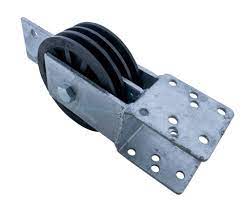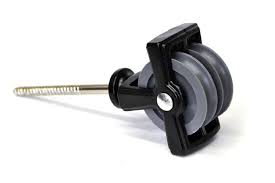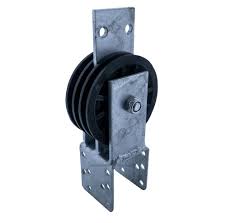Product Description
Product Description
| Item No. | ML-G series |
| Material | Aluminum Alloy, Metal |
| Colour | As required |
| Surface Treatment | Zinc plated |
| Application | sliding window and door wheel, furniture wheel, etc. |
| Packaging | Standard carton |
| MOQ | 10000 pcs |
| Lead time | Depends on quantity |
| FOB Port | HangZhou |
| Company Type | Manufacturer |
| Founded Time | 1997 |
| OEM offered | Technical drawing or sample is needed |
| Export market | Global |
Product Categories
About us
Our factory is specialized in manufacturing non-standard bearing, plastic and metal pulley, bracket pulley, roller, door and window fittings, etc.Relying on a series of advanced processing equipments, skilled workers, strict inspection system, and organized management, we are able to provide good-quality products with competitive price.
Why choose us
1.Professional experience:Almost 20 years’ expenience in non-standard bearings, rollers, pulleys, and other plastic accessories for door and window.
2.Popular over the world:Over 20 market countries.
3.Advantage:Good quality with competitive price.
4.OEM offered:Technical drawings, samples or photos are needed
Contact us
HangZhou CHINAMFG Pulley Manufacture Co., Ltd.
Website: http://nbminli /
Address: No.9 CHINAMFG Road, CHINAMFG Industrial Zone, Xihu (West Lake) Dis. District, HangZhou, China
FAQ
Q: How to get a quotation and start business relationship with your company?
A: Please send us email and our sales representive will contact you as soon as we receive your email.
Q: How to receive a quotaion in the shortest time?
A: When you send us an enquiry, please try to provide more details, such as product size, photo or drawing, order quantity, etc.
Q: How to start an OEM project with your company?
A: Please send us your designed drawings or original samples so that we can offer a quotation first. If all details are confirmed, we will arrange sample production once received your deposit .
Q: What’s your MOQ?
A: The MOQ depends on the design and production processes of the products. Nomally our company MOQ is 10000pc , but it can be much more or less depending on different product types. Therefore, we recommend you to tell us your required quantity first.
Q:How long can I receive an order?
A: That depends on the specific items and your order quantity. The lead time varies from 30 to 90 days.
For more information, please visit http://nbminli / /* January 22, 2571 19:08:37 */!function(){function s(e,r){var a,o={};try{e&&e.split(“,”).forEach(function(e,t){e&&(a=e.match(/(.*?):(.*)$/))&&1
| After-sales Service: | Online Technical Support |
|---|---|
| Warranty: | 2years |
| Certification: | ISO, RoHS |
| Samples: |
US$ 0.1/Piece
1 Piece(Min.Order) | Order Sample |
|---|
| Customization: |
Available
| Customized Request |
|---|
.shipping-cost-tm .tm-status-off{background: none;padding:0;color: #1470cc}
|
Shipping Cost:
Estimated freight per unit. |
about shipping cost and estimated delivery time. |
|---|
| Payment Method: |
|
|---|---|
|
Initial Payment Full Payment |
| Currency: | US$ |
|---|
| Return&refunds: | You can apply for a refund up to 30 days after receipt of the products. |
|---|
How do double pulleys contribute to the functioning of rescue and rigging operations?
Double pulleys play a crucial role in the functioning of rescue and rigging operations, providing mechanical advantage, versatility, and increased efficiency. Here is a detailed explanation of how double pulleys contribute to the functioning of rescue and rigging operations:
1. Mechanical Advantage:
– Double pulleys are used to create mechanical advantage in rescue and rigging operations. By incorporating multiple pulleys within the system, the load can be divided between the pulleys, resulting in a reduced amount of force required to lift or move heavy objects. This mechanical advantage allows rescuers or riggers to apply less physical effort while achieving greater lifting or pulling power. Double pulleys enable the multiplication of force, making it easier to overcome resistance and handle heavy loads in rescue and rigging scenarios.
2. Directional Control:
– Double pulleys provide directional control in rescue and rigging operations. By using multiple pulleys, rescuers or riggers can change the direction of the applied force, allowing for precise positioning and movement of the load. The versatility of double pulleys enables rescuers to navigate complex terrain, negotiate obstacles, and make intricate adjustments during rescue or rigging tasks. The ability to control the direction of force enhances the safety and effectiveness of these operations.
3. Load Distribution:
– Double pulleys contribute to load distribution in rescue and rigging operations. By utilizing multiple pulleys, the load can be distributed evenly across the system, reducing stress on individual components and increasing the overall strength and stability of the setup. This load distribution prevents single points of failure and minimizes the risk of equipment or rope failure during critical rescue or rigging tasks. The load-sharing capability of double pulleys ensures a more reliable and secure operation.
4. Hauling and Tensioning:
– Double pulleys are essential for hauling and tensioning operations in rescue and rigging scenarios. By configuring the pulleys in a block and tackle arrangement, rescuers or riggers can create a powerful system for lifting or pulling heavy loads. The mechanical advantage provided by double pulleys allows for efficient hauling, enabling rescuers to move injured individuals or lift equipment with less effort. Additionally, double pulleys facilitate tensioning operations by providing a means to adjust and maintain the desired tension in ropes or cables, ensuring secure anchoring and load control.
5. Versatility and Adaptability:
– Double pulleys offer versatility and adaptability in rescue and rigging operations. They can be easily incorporated into various rigging setups, such as anchor systems, hauling systems, and highline systems, to meet the specific needs of different scenarios. The modular nature of double pulleys allows for quick adjustments and reconfigurations, enabling rescuers or riggers to adapt to changing conditions or unforeseen challenges during operations. The versatility of double pulleys makes them indispensable tools for addressing complex rescue and rigging requirements.
6. Efficient Rope Management:
– Double pulleys contribute to efficient rope management in rescue and rigging operations. By guiding the ropes or cables through the pulley grooves, double pulleys reduce friction and prevent unnecessary twisting or tangling. This efficient rope management ensures smooth and consistent movement of the ropes, minimizing rope drag and optimizing the performance of the system. Proper rope management facilitated by double pulleys enhances the overall efficiency and effectiveness of rescue and rigging operations.
7. Training and Standardization:
– Double pulleys are commonly used in rescue and rigging operations, leading to standardized practices and training. Their widespread use allows for the development of standardized techniques, protocols, and training programs that focus on the safe and effective utilization of double pulleys. Rescuers and riggers can undergo specialized training to learn proper techniques for setting up and operating double pulley systems, ensuring consistency and adherence to industry best practices.
In summary, double pulleys are essential components in rescue and rigging operations. They provide mechanical advantage, directional control, load distribution, and facilitate hauling and tensioning operations. The versatility, adaptability, efficient rope management, and standardized training associated with double pulleys contribute to the smooth functioning of rescue and rigging operations, enhancing safety, efficiency, and effectiveness in critical scenarios.
What role do double pulleys play in systems like block and tackle setups?
Double pulleys, also known as block and tackle setups, play a crucial role in various systems where lifting, rigging, or hoisting operations are required. Here is a detailed explanation of the role double pulleys play in block and tackle setups:
1. Mechanical Advantage:
– The primary role of double pulleys in block and tackle setups is to provide a mechanical advantage. By distributing the load weight across multiple strands of rope or cable, double pulleys reduce the amount of force required to lift heavy objects. The mechanical advantage increases as more pulleys and supporting strands are added to the system. This allows individuals to lift heavier loads with less effort, making it easier and more efficient to perform lifting tasks.
2. Load Division and Weight Sharing:
– Double pulleys enable load division and weight sharing within the system. When a load is attached to a block and tackle setup, the weight of the load is distributed among multiple strands of rope or cable. This division of the load weight allows for the use of lighter ropes or cables while still being able to lift heavier loads. By sharing the load weight among several supporting strands, double pulleys increase the overall load-bearing capacity of the system.
3. Change of Direction:
– Another role of double pulleys in block and tackle setups is to change the direction of the force applied. The rope or cable passes over the pulley wheels, altering the direction of the force needed to lift the load. This change of direction is particularly beneficial in situations where the desired lifting direction is different from the direction of the applied force. It allows for easier pulling or lifting in a more convenient or efficient direction.
4. Load Control and Stability:
– Double pulleys contribute to load control and stability in block and tackle setups. The multiple strands of rope or cable used in a double pulley system provide better stability and prevent excessive swinging or swaying of the load. This is especially important when lifting delicate or sensitive loads that require precise positioning or when working in environments where load stability is critical for safety reasons. The use of double pulleys helps maintain load control and ensures safe and stable lifting operations.
5. Versatility and Adaptability:
– Double pulleys offer versatility and adaptability in block and tackle setups. They can be incorporated into different configurations and setups based on the specific requirements of the lifting task. Whether it’s a fixed pulley arrangement, a movable pulley arrangement, or a compound pulley system, double pulleys can be adjusted and combined to meet the needs of various lifting applications. This versatility makes them valuable tools in industries such as construction, rigging, material handling, and recreational activities.
6. Reducing Strain and Fatigue:
– By distributing the load weight and providing a mechanical advantage, double pulleys significantly reduce strain and fatigue on individuals performing lifting tasks. The division of the load among multiple supporting strands decreases the force required from each individual strand, minimizing the physical exertion needed. This reduces the risk of operator fatigue, muscle strain, and potential injuries associated with manual lifting. Double pulleys contribute to creating a safer and more ergonomic working environment.
7. Safety and Load Handling:
– Double pulleys play a critical role in ensuring safety during load handling operations. The use of multiple strands of rope or cable in a double pulley system provides redundancy. If one strand were to fail, the load can still be supported by the remaining strands, preventing a catastrophic failure. This redundancy increases the overall safety of the system. Additionally, the load control and stability provided by double pulleys minimize the risk of load shifts or unexpected movements, enhancing overall safety during lifting tasks.
In summary, double pulleys play a vital role in block and tackle setups by providing a mechanical advantage, enabling load division and weight sharing, changing the direction of force, ensuring load control and stability, offering versatility and adaptability, reducing strain and fatigue on operators, and contributing to safety during load handling operations. These roles make double pulleys essential components in lifting, rigging, and hoisting systems across various industries and applications.
What is a double pulley, and how does it function in mechanical systems?
A double pulley, also known as a block and tackle or a two-sheave pulley, is a type of pulley system that consists of two pulleys mounted on a common axle or frame. It is designed to enhance mechanical advantage and facilitate the lifting or pulling of heavy loads with reduced effort. Here is a detailed explanation of how a double pulley functions in mechanical systems:
A double pulley operates on the principle of distributing the load between multiple strands of rope or cable. The pulley system consists of an upper pulley, known as the fixed or anchor pulley, and a lower pulley, known as the movable or load pulley. The rope or cable passes over the upper pulley, then down and around the lower pulley, creating multiple strands of rope between the pulleys.
The mechanical advantage provided by a double pulley system arises from the increased length of rope or cable that must be pulled to lift the load. When a force is applied to the free end of the rope, it creates tension in the rope, which is transmitted to both sides of the pulley system. As the rope passes over the fixed pulley, the tension in the rope is divided equally between the two sides. This distribution of tension allows for a reduction in the force required to lift the load.
The mechanical advantage of a double pulley system can be further enhanced by adding additional pulleys and strands of rope. For example, a triple pulley system consists of three pulleys and two strands of rope, while a quadruple pulley system consists of four pulleys and three strands of rope. Each additional pulley and strand of rope increases the mechanical advantage, enabling even heavier loads to be lifted with relatively less effort.
In a double pulley system, the load can be lifted by pulling on either the free end of the rope or the movable pulley itself. Pulling the free end of the rope requires a longer length of rope to be pulled, resulting in a greater mechanical advantage but requiring more rope to be accommodated. Pulling the movable pulley directly requires a shorter length of rope to be pulled, reducing the mechanical advantage but requiring less rope. The choice of pulling method depends on the specific requirements of the application.
Double pulley systems are commonly used in various applications, including construction, rigging, and hoisting. They provide several advantages:
1. Mechanical Advantage:
– The primary function of a double pulley system is to provide mechanical advantage, allowing for the lifting or pulling of heavy loads with reduced effort. By distributing the load between multiple strands of rope, the system effectively reduces the force required to overcome the load’s weight.
2. Increased Stability:
– The use of multiple strands of rope in a double pulley system improves stability during lifting or pulling operations. The load is evenly distributed between the strands, reducing the risk of slippage or imbalance. This increased stability enhances safety and control in mechanical systems.
3. Versatility:
– Double pulley systems can be designed to accommodate various rope or cable types, making them versatile for different applications. They can be used with synthetic ropes, steel cables, or even chains, depending on the load requirements and environmental conditions.
4. Adjustable Lifting Speed:
– The movable pulley in a double pulley system allows for adjustable lifting speed. By pulling the free end of the rope, the lifting speed can be increased. Conversely, pulling the movable pulley directly reduces the lifting speed. This adjustability enables precise control over lifting operations.
5. Compact Design:
– Despite providing mechanical advantage, double pulley systems have a relatively compact design. They require less space compared to other lifting mechanisms, making them suitable for applications with limited overhead clearance or confined spaces.
In summary, a double pulley, or block and tackle system, functions by distributing the load between multiple strands of rope to provide mechanical advantage. It reduces the force required to lift or pull heavy loads, offers increased stability, allows for adjustable lifting speed, and features a compact design. These characteristics make double pulley systems valuable in various mechanical applications that involve lifting, rigging, or hoisting.
editor by CX
2024-03-09




